When planning to attach a pergola to a house with gutters, it’s essential to understand the unique challenges and considerations involved. A pergola not only enhances the aesthetic appeal of your outdoor space but also provides a functional area for relaxation and entertaining. However, integrating it with existing gutters requires careful planning to ensure that the structure is secure and the drainage system remains unaffected. This guide will walk you through how to attach a pergola to a house with gutters to your house while maintaining both its structural integrity and the seamless operation of your gutters.
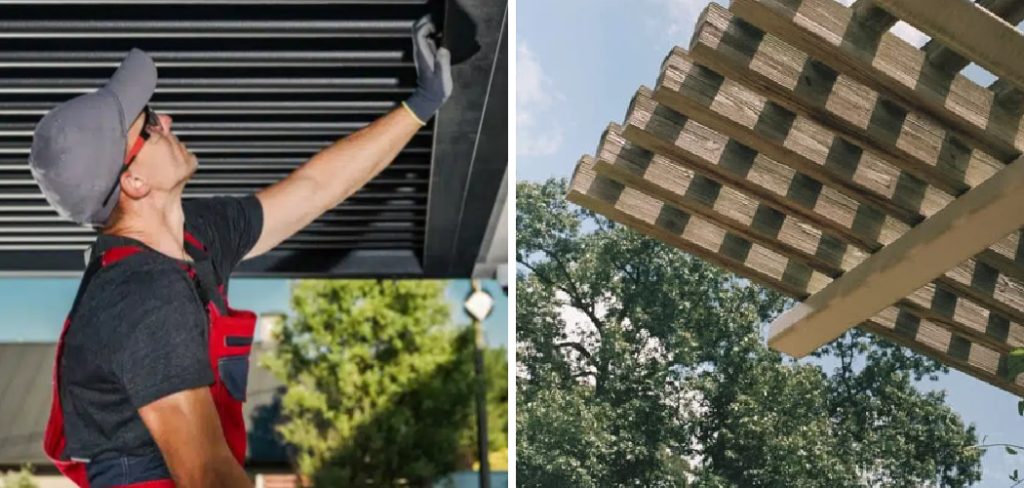
What is a Pergola and Its Benefits for Outdoor Spaces
A pergola is an outdoor garden feature forming a shaded walkway, passageway, or sitting area, typically consisting of vertical posts or pillars that support cross-beams and a sturdy open lattice. Often covered with climbing plants, pergolas create a charming and inviting ambiance. Their design not only enhances the visual appeal of a garden or patio but also adds a layer of functionality. By providing shade, a pergola can make an outdoor space more comfortable and usable, even during the peak of summer sun.
They also offer a degree of privacy and can serve as an elegant framework for lighting, fans, or even curtains, further enhancing the outdoor experience. Additionally, pergolas can extend living spaces, creating an outdoor area that feels like an extension of the home, perfect for dining, lounging, or entertaining.
Understanding Pergola Design
When designing a pergola, several factors need to be considered to ensure both aesthetics and functionality are achieved. The choice of materials is paramount; common options include wood, metal, and vinyl, each offering unique advantages. Wood, for instance, provides a natural and classic look but requires regular maintenance, whereas metal and vinyl are more durable and require less upkeep.
The style of the pergola is also crucial, ranging from traditional to contemporary designs, allowing for seamless integration with the existing architecture of the home. Size and scale should complement the outdoor area and not overwhelm the space. Additionally, it’s important to consider whether the pergola will be free-standing or attached to the house, as this affects the overall design and structural requirements. Other design elements, such as the spacing of the beams and slats, can influence the amount of sunlight and shade provided, making it a versatile structure suited to a variety of environmental conditions.
Types of Pergolas
There are several distinct types of pergolas, each offering unique benefits and aesthetic qualities to suit various preferences and landscapes:
- Free-Standing Pergolas: These stand independently and can be placed anywhere in the backyard or garden. They provide flexibility in complementing open spaces and can be used to create a designated area for relaxation or dining away from the main structure of the house.
- Attached Pergolas: Designed to extend from an existing structure, such as a house or garage, attached pergolas create a seamless indoor-outdoor transition. They are ideal for enlarging living spaces and are often used on patios or decks to provide shade and protection from the elements.
- Arched Pergolas: Featuring an arched roof, these pergolas add an elegant, sophisticated touch to the landscape. The curvature allows for unique architectural interest and can support climbing plants more dynamically due to their elevated design.
- Sail Pergolas: Incorporating fabric or shade sails instead of a traditional slatted roof, sail pergolas offer a modern twist. They provide greater UV protection and can be adjusted for varying levels of shade and privacy, making them practical for outdoor comfort.
- Louvered Pergolas: Equipped with adjustable slats on the roof, louvered pergolas allow for greater control over sunlight exposure and ventilation. Users can open the slats to let in more light or close them for more shade and rain protection.
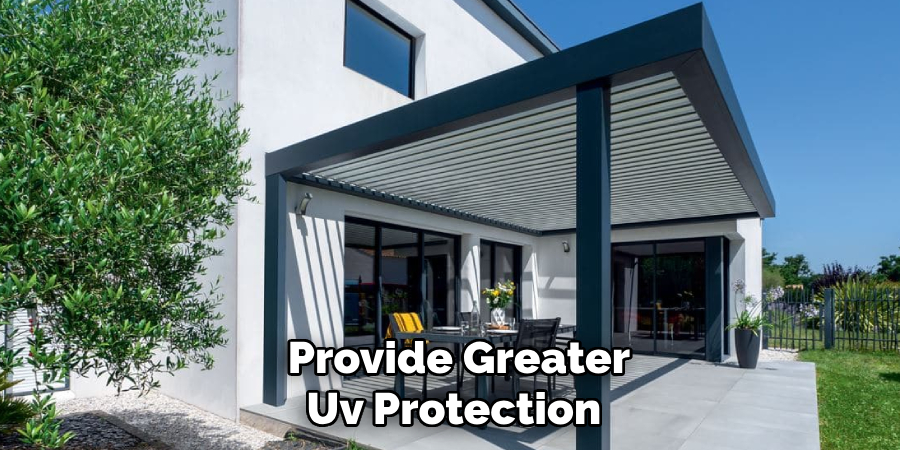
Each type of pergola can be further customized in terms of size, material, and design elements to align with individual preferences and accommodate specific functional requirements.
10 Ways on How to Attach a Pergola to a House with Gutters
Adding a pergola to your home is a fantastic way to enhance your outdoor living space, offering both aesthetic appeal and shade. However, for many homeowners and gardeners, attaching a pergola to a house with existing gutters can be challenging. This guide explores ten effective methods to seamlessly incorporate a pergola into your home design without compromising the functionality of your gutters.
1. Understand Your Gutter System
Before attaching anything to your house, it’s crucial to understand how your gutter system works. Gutters are designed to redirect rainwater away from your property, preventing water damage to your roof and foundation. Familiarize yourself with the layout and functionality of your gutters to determine the best approach to attaching your pergola without disrupting this vital system.
2. Use Free-Standing Pergola Designs
A free-standing pergola doesn’t rely on attachment to the house, which means you can position it near your home without interfering with the gutters. These designs are supported by posts anchored into the ground, allowing flexibility in placement while still offering the desired shade and style.
3. Install Adjustable Brackets
Adjustable brackets provide a versatile solution for attaching a pergola to a house with gutters. These brackets can be customized to match the slope and height of your gutters, ensuring a secure fit. They allow you to attach the pergola’s beams just above the gutter line, maintaining the integrity of your gutter system.
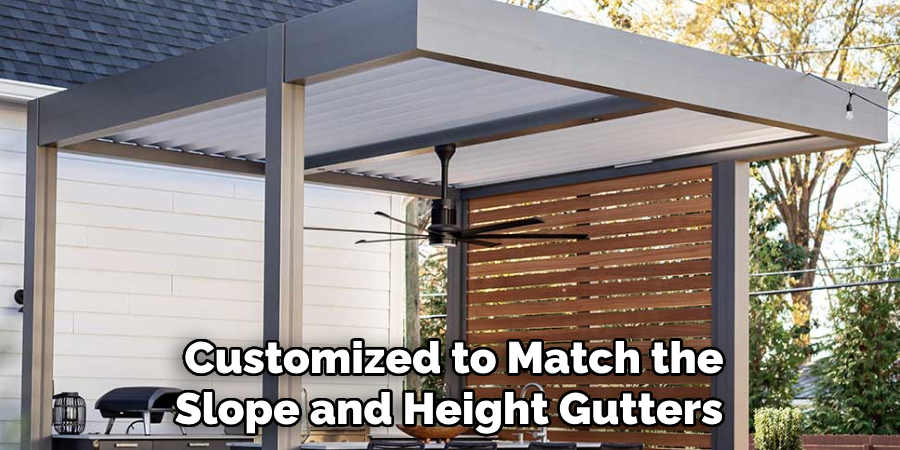
4. Utilize Rafter Tails
Rafter tails, the wood extensions projecting from the edge of the roof, can be used to support the pergola beams. By securely attaching the pergola to these tails, you create a stable structure without needing to interfere with the gutters. Ensure the rafter tails are structurally sound before proceeding.
5. Opt for Gutter-Mounted Posts
Gutter-mounted posts are specifically designed to integrate with your existing gutter system. These posts are installed directly on the roofline, allowing you to attach your pergola without altering the gutters. This method is ideal for homes with robust and well-maintained gutters capable of supporting additional weight.
6. Explore Wall-Mounted Pergola Designs
Wall-mounted pergola designs attach directly to the house wall above the gutter line. This technique bypasses the gutters entirely, leaving them unaltered. With proper anchoring and support, wall-mounted pergolas offer stability and a seamless look.
7. Implement Roof Anchors
Roof anchors are specialized fittings that secure the pergola to the roof of your house rather than the gutter or walls. This method ensures the gutters remain unaffected, preserving their function. Roof anchors require careful installation to prevent roof damage; consider professional assistance for this option.
8. Use Spacer Blocks for Added Clearance
Spacer blocks can be used to create additional clearance between the pergola and your gutter system. By positioning these blocks between the pergola and the house, you ensure that the gutters can operate unimpeded. This solution also allows rainwater to flow freely, preventing any blockage or overflow.
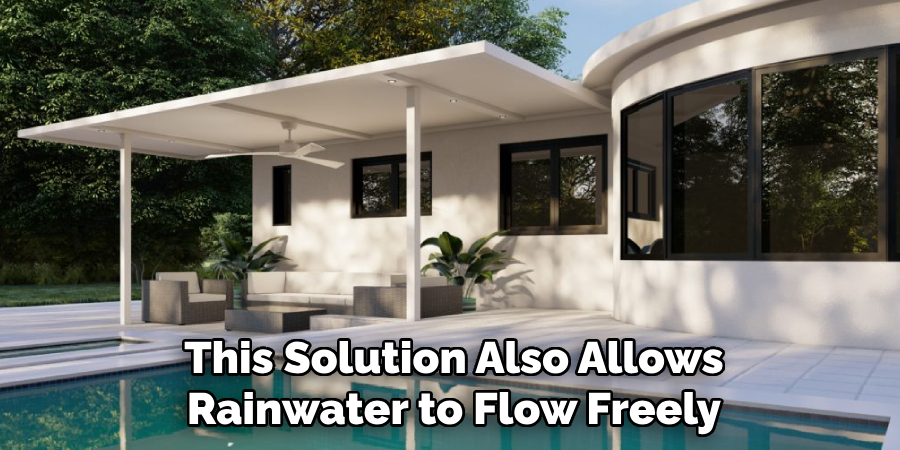
9. Reinforce Existing Structures
If your house has existing structural features like pillars or columns, consider attaching your pergola to these elements. This strategy allows you to avoid the gutters altogether, utilizing the house’s architecture for support. Ensure any existing structure is sufficiently reinforced to handle the added weight of the pergola.
10. Consult with a Professional Builder
Sometimes, the best solution is to consult with a professional. Builders with experience in attaching pergolas to houses can provide insights and tailored solutions that respect your home’s unique design and gutter system. This investment can save time and ensure a durable, functional result.
Maintenance and Upkeep
Maintaining a pergola, especially one attached to your house, involves regular care to ensure its longevity and functionality. Start by inspecting your pergola seasonally for any signs of wear, such as loose joints or rotting wood, and address these issues promptly. Routine cleaning is essential; wash the structure with a mild detergent and water to prevent mildew and dirt accumulation. If your pergola includes metal components, check for rust and apply a rust-inhibiting primer and paint as needed.
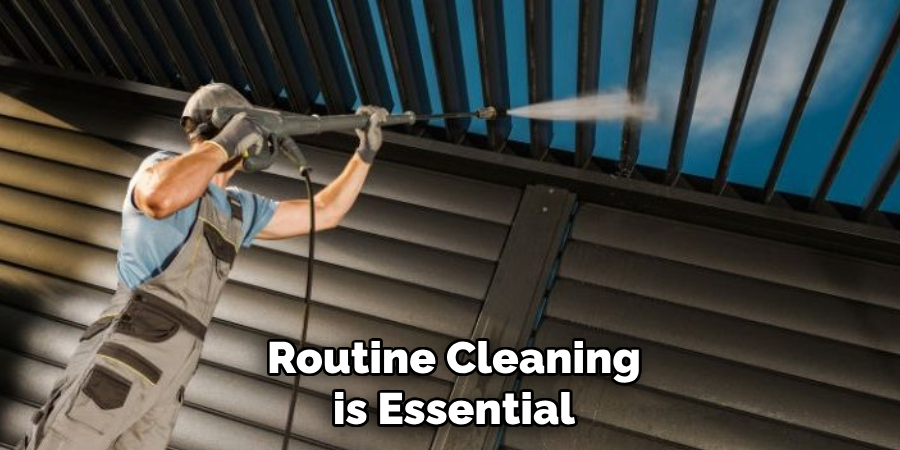
Additionally, ensure that any fabric or shade sails are kept clean and tight, replacing them if they become damaged. It’s also important to continuously monitor the pergola’s connection to your house—particularly if it’s using gutter-mounted posts or wall mounts—to ensure it remains secure and does not impede the effectiveness of your gutter system. Regular maintenance not only extends the life of your pergola but also keeps your outdoor living space both safe and inviting.
Conclusion
Adding a pergola to your home, especially when working around existing gutters, can significantly enhance your outdoor living area with style and functionality. By considering various methods like free-standing designs, adjustable brackets, or consulting professionals, you can seamlessly integrate a pergola while maintaining the integrity of your gutter system. Thanks for reading, and we hope this has given you some inspiration on how to attach a pergola to a house with gutters!
